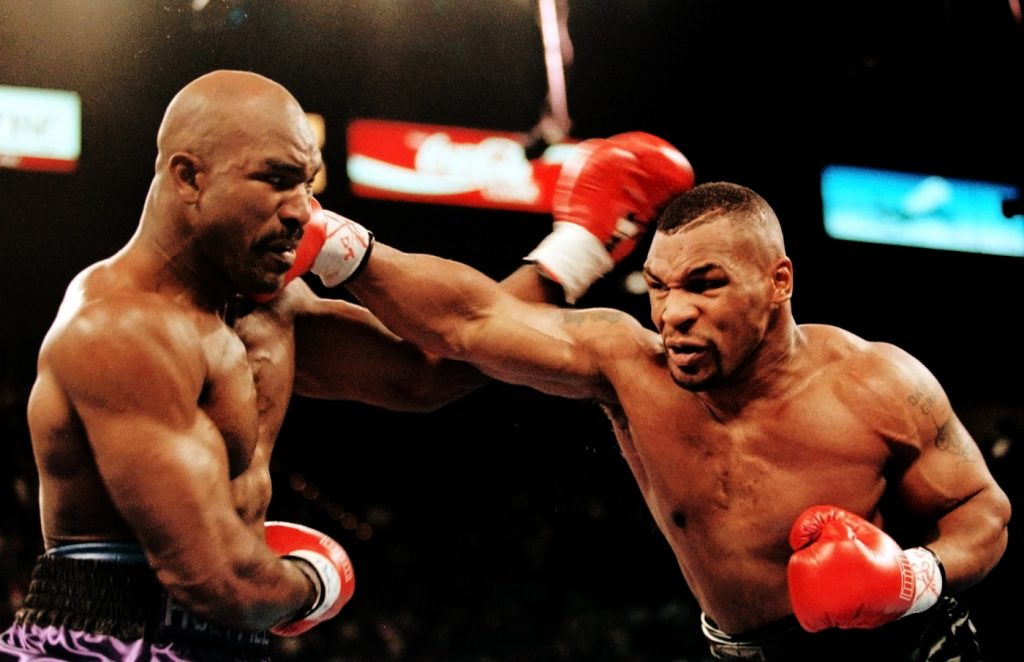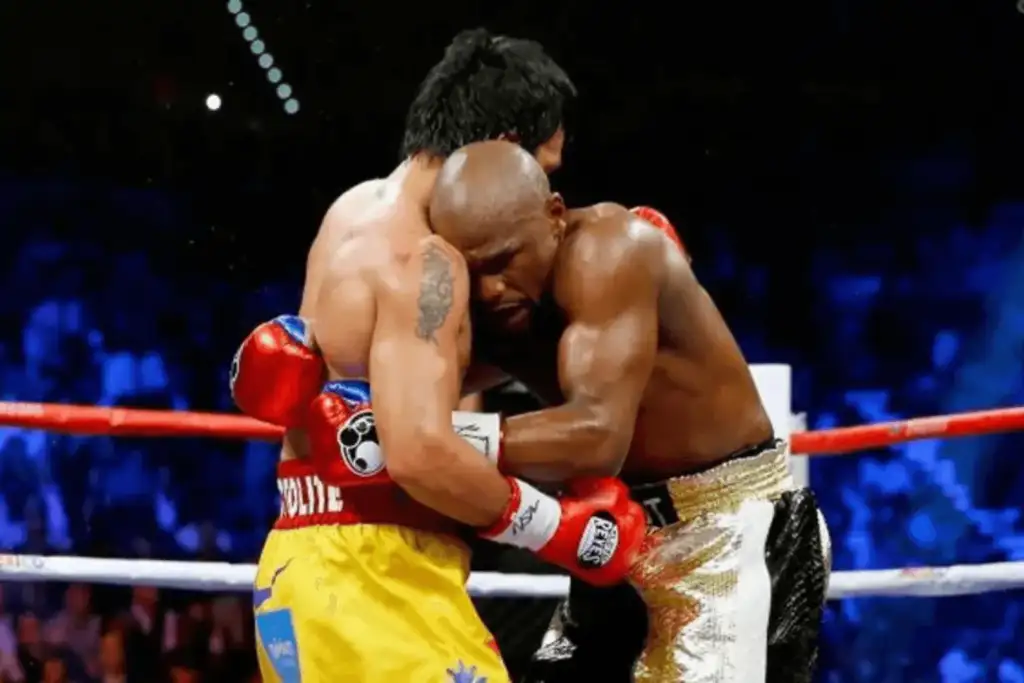Do you feel curious about how the boxers manage to dodge punches like they’re in a real-life version of “The Matrix”?
You know, those moments when they weave around jabs and hooks with the grace of a dancer and the speed of a ninja?
It’s not all about brute strength and throwing the hardest punches.
In fact, a lot of the magic happens in defense and studying the boxing match with your opponent.
Unsure about how they do it?
Ready to learn the secrets that could help you in the ring or impress your friends at the next movie night?
Let’s find out about the best boxing defense techniques that could make you look like the next Mayweather (or at least keep your face looking pretty):
Boxing Defense Techniques For Beginners
Here are the best boxing defense tactics every boxer should learn:
1. Guard/Block

Guarding or blocking involves using the arms and hands to protect the head and body from incoming punches.
The classic guard position involves keeping the hands up near the face, with the elbows tucked in to protect the ribs.
This technique minimizes the impact of punches by absorbing the force on the arms instead of the more vulnerable parts of the body.
2. Slip
Slipping is a defensive boxing technique used to avoid punches by moving the head to the side.
When an opponent throws a punch, the boxer quickly shifts their head either left or right, making the punch miss its target.
This movement is often small and subtle, allowing the boxer to maintain their balance and position for a counterattack.
3. Bob and Weave

Bob and weave involves moving the head and upper body in a weaving motion to evade punches.
The boxer bends their knees and moves their torso from side to side in a rhythmic motion, making it difficult for the opponent to land a clean hit.
This technique also helps in setting up counterpunches as it creates openings in the opponent’s defense.
4. Parry
Parrying is the act of deflecting an incoming punch with the hands.
Instead of absorbing the blow, the boxer uses a quick, sharp movement to redirect the punch away from its intended target.
This can create openings for counterattacks and is an effective way to minimize damage while staying in range.
5. Roll
Rolling involves rotating the shoulders and upper body to roll under a punch.
This defensive boxing technique is often used against hooks or wide punches, allowing the boxer to come up in a better position for a counterattack.
The roll is a fluid movement that helps maintain balance and positioning.
6. Duck

Ducking is a simple yet effective technique where the boxer bends their knees and lowers their body to evade a punch, typically a straight or jab.
This movement allows the boxer to stay close to their opponent while avoiding the punch, often setting up opportunities for body shots or uppercuts.
7. Pivot
Pivoting involves turning on the ball of the lead foot to change angles and create new lines of attack and defense.
This technique is used to evade punches while positioning oneself in a more advantageous spot.
Pivoting can disrupt the opponent’s rhythm and open up new angles for counterattacks.
8. Clinch

Clinching is the act of wrapping the arms around the opponent to prevent them from throwing punches.
This close-range technique can break the opponent’s momentum and provide a brief respite.
Clinching is often used strategically to recover or to disrupt the opponent’s rhythm.
9. Shoulder Roll
The shoulder roll, popularized by fighters like Floyd Mayweather, involves using the shoulder to deflect punches.
The boxer rolls their shoulder inward to deflect the punch while keeping the chin tucked and the opposite hand ready to counter.
This defensive boxing technique requires precise timing and skill.
10. Footwork/Evasion
Footwork and evasion involve using quick and precise movements to stay out of the opponent’s reach.
This includes moving forward, backward, and laterally to create distance, change angles, and avoid punches.
Good footwork allows the boxer to maintain balance, control the pace of the fight, and position themselves for attacks and defenses.
Related: Proper Boxing Stance
Final Recap
Boxing isn’t just about throwing the perfect punch; it’s about not getting hit in the first place.
Which boxing defensive technique do you think you’d master first?
The slick slip, the bob and weave, or maybe the flashy shoulder roll?




